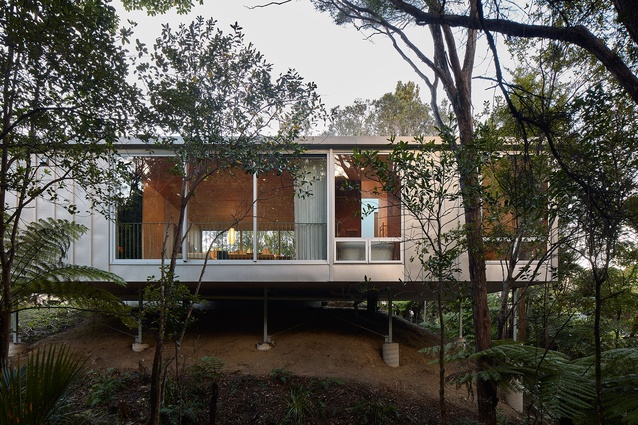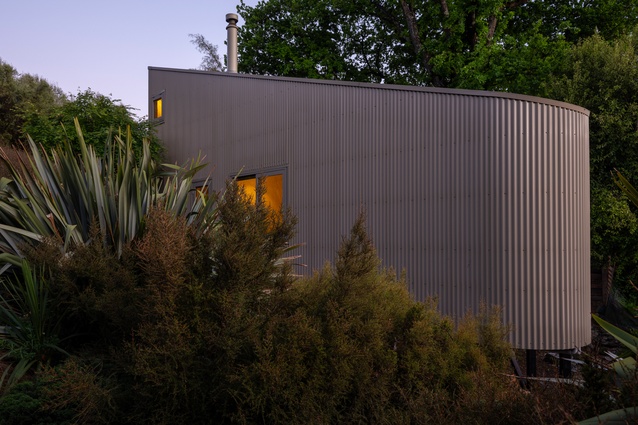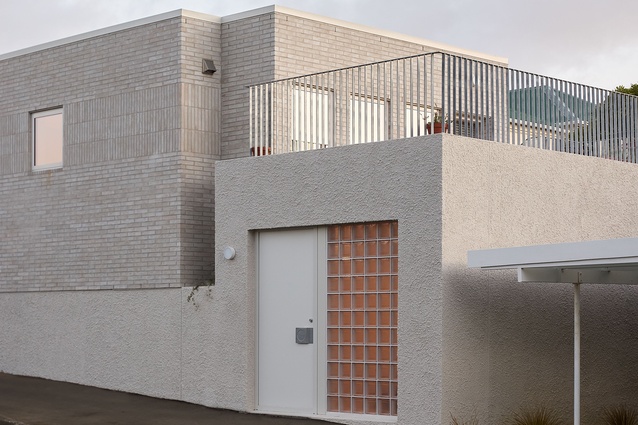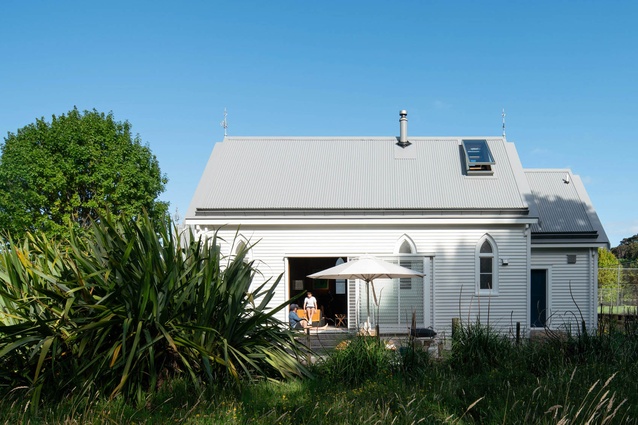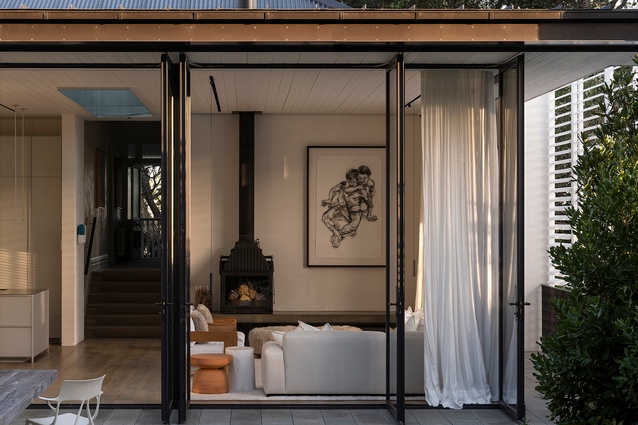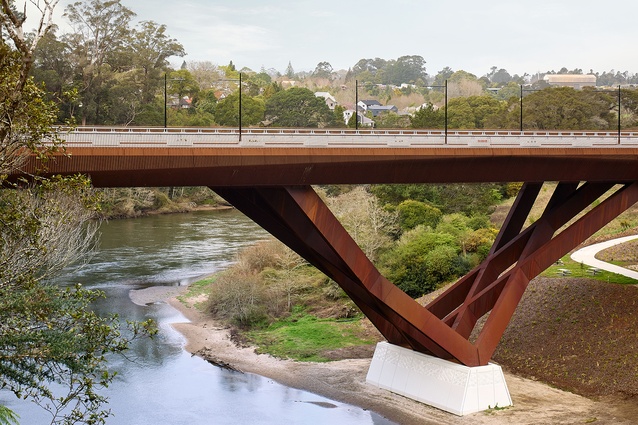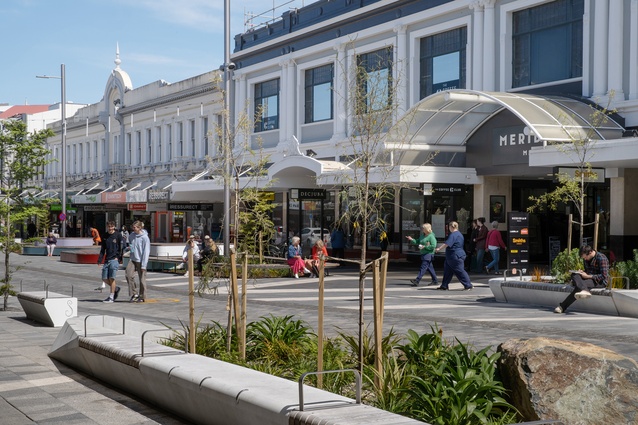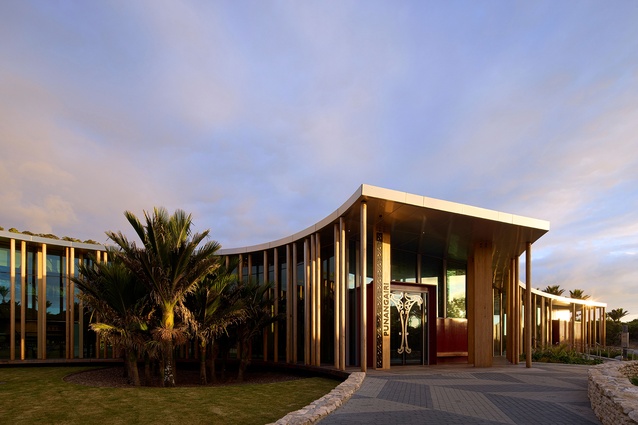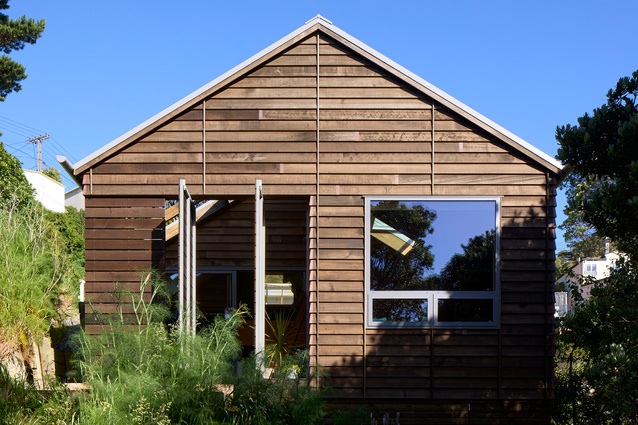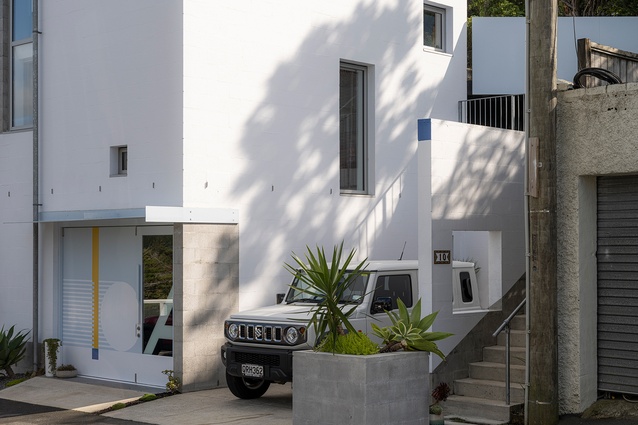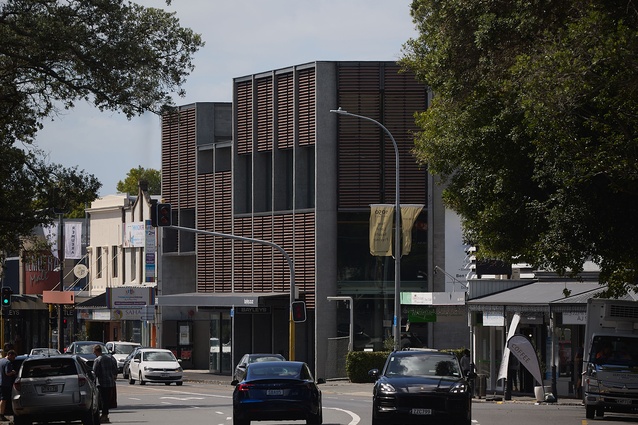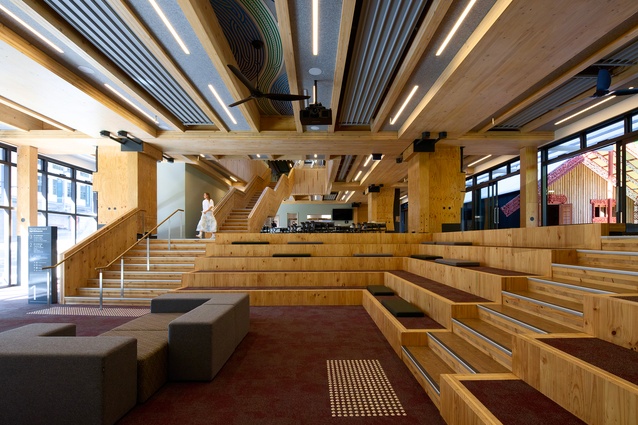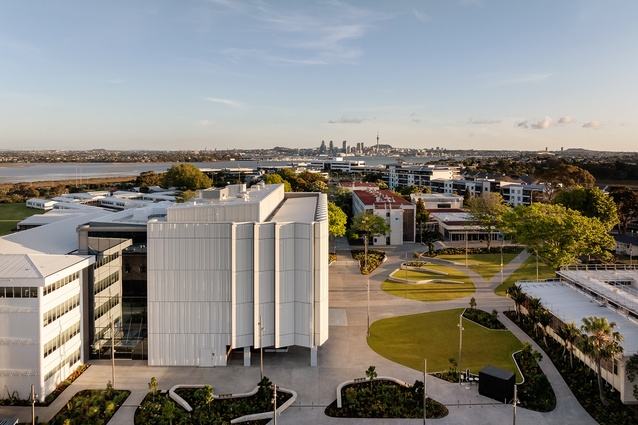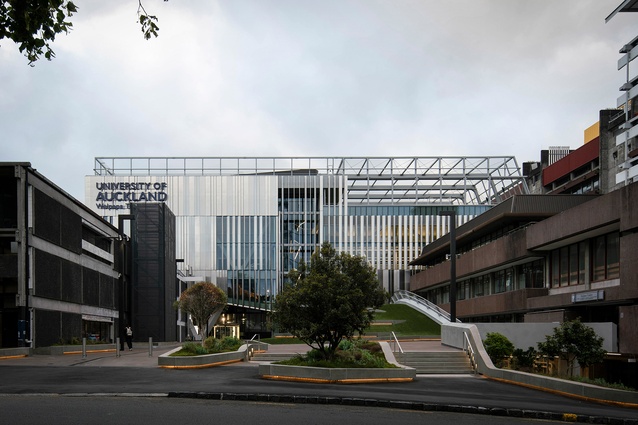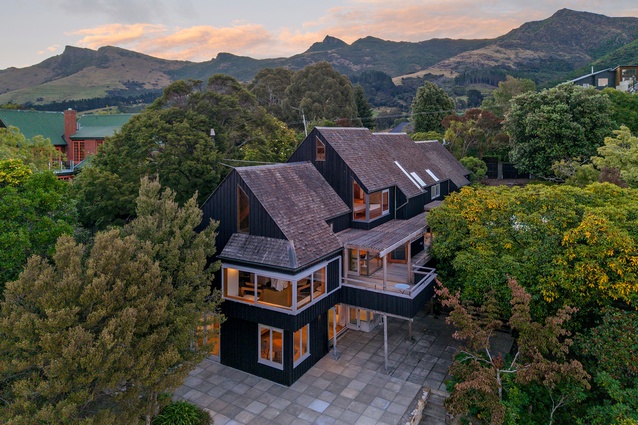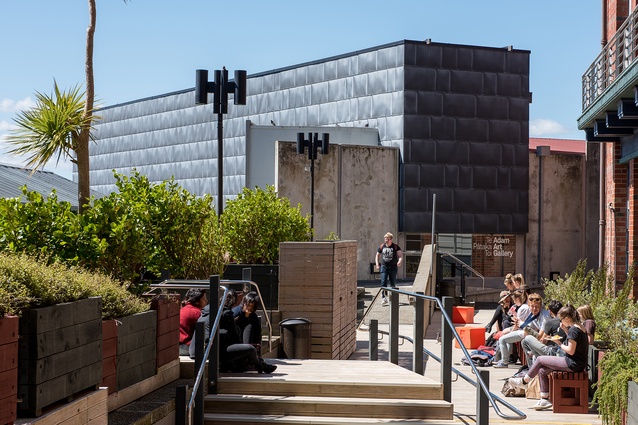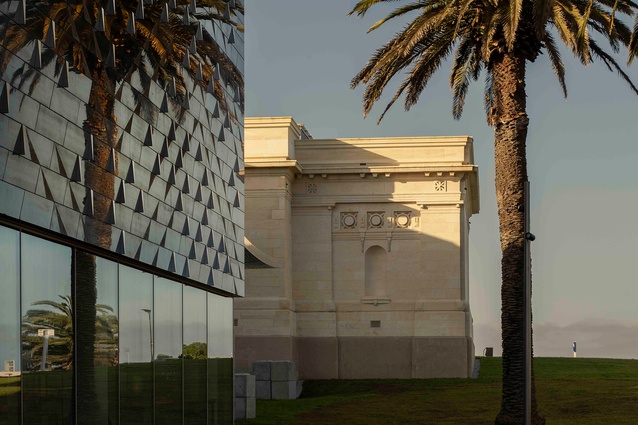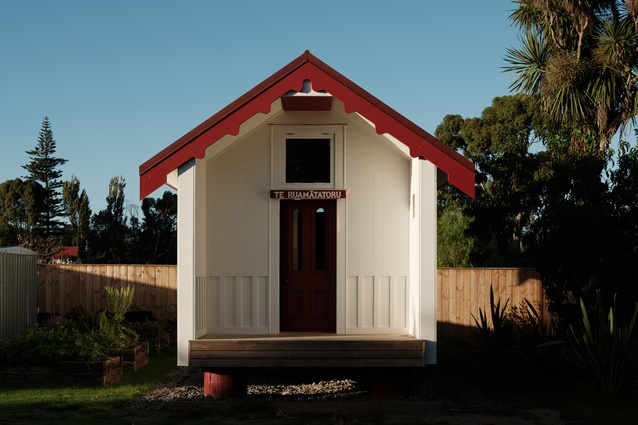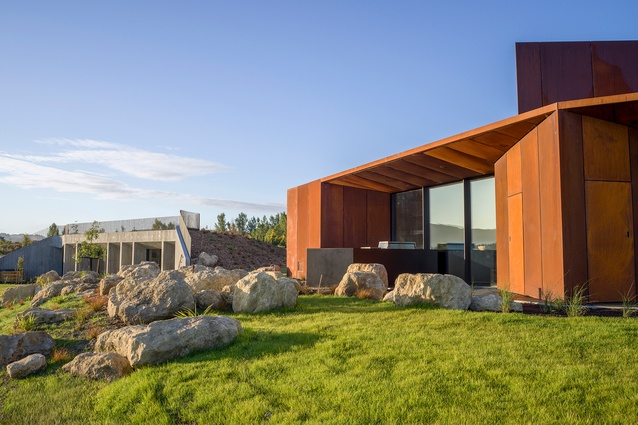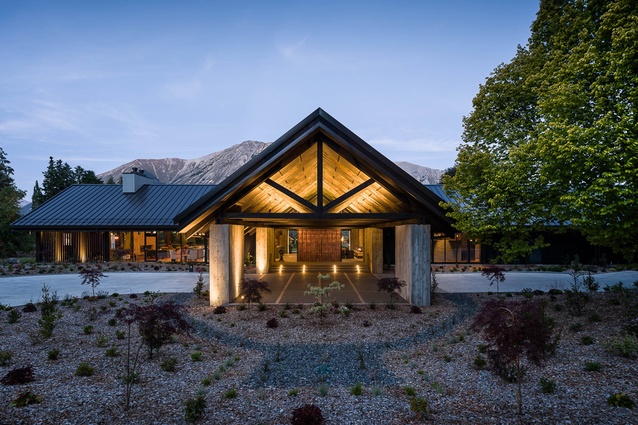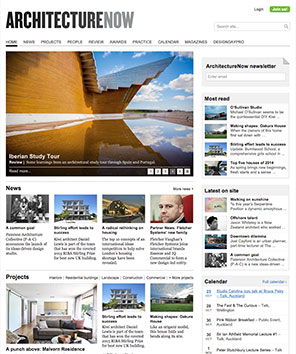Winners announced: 2025 New Zealand Architecture Awards
Te Kāhui Whaihanga New Zealand Institute of Architects (NZIA) has announced the winners of this year's New Zealand Architecture Awards.
This year’s New Zealand Architecture Awards jury was headed by Craig Moller of Moller Architects. Moller was joined by Beth Cameron from Makers of Architecture, Nicola Herbst of Herbst Architects and Ilana Freadman from Freadman White Architects in Melbourne, Australia. The jury visited 61 short-listed projects across 11 categories during August.
In the official convenor’s message, Moller commented on how the journey visiting projects across Aotearoa inspired, “the projects that were visited? It is a crash course in architecture that not only reveals the talent of architects and their collaborators across New Zealand, but also demonstrates to me that I must try harder. That is the lesson I took away as jury convenor. Being on the jury tour is a self-reflective exercise as much as it is an architectural tour. ”
Moller added, “While the jury typically visits the main centres of Tāmaki Makaurau Auckland, Te Whanganui-a-Tara Wellington, Ōtautahi Christchurch and Ōtepoti Dunedin, it was pleasing to visit some of the smaller provincial towns and discover that they are well represented with hidden gems in the urban, suburban and rural fabric of these places.”
The full convenor’s message, winning projects and citations are available in print within the special 2025 New Zealand Architecture Awards edition of Architecture NZ, available to purchase online from 21 November 2025.
View all of the winning projects in the slideshow above, and read on for the jury citations.
The named awards can be viewed by clicking the individual links below.
Sir Miles Warren Award for Commercial Architecture
Sir Ian Athfield Award for Housing
John Scott Award for Public Architecture
HOUSING
Popadich House by Davor Popadich Architects

The judges said: “This house is a sensitive and understated insertion into its rural setting, with careful and extensive plantings that both ground the building and provide shelter.
An L-shaped plan enables the house to adapt and respond to its environment, while the placement of a separate studio completes the notion of a courtyard, forming a sheltered and recessed outdoor space. Planning is rigorously organised on a 600mm grid aligned with rafter spacings, allowing for cost efficiency and a variety of spatial outcomes. Simple forms and a low-pitched roof with generous eaves create a modest scale and a thoughtful relationship to the landscape.
Inside, the relaxed atmosphere is supported by detailed and crafted finishes, extending to the custom wardrobe doors and drawer pulls. The garage is acknowledged as a flexible, multi-functional space rather than one solely for cars, reflecting the pragmatic needs of family life. Together, these qualities produce a home of quiet character, accommodating the complexities of family living with clarity and care.”
Bush Block by Patchwork Architecture
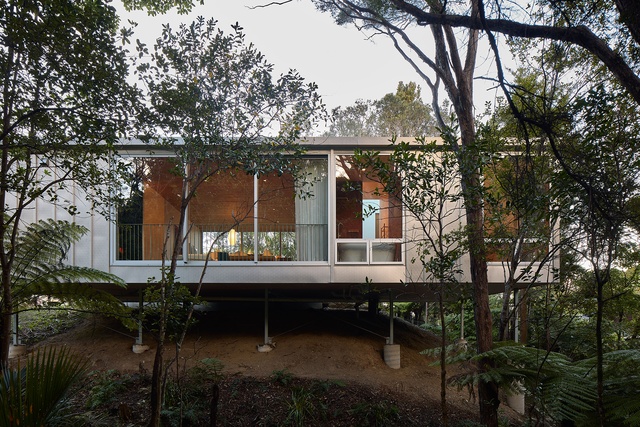
The judges said: “Despite a constrained budget, challenging site conditions, and a pre-approved envelope, this house delivers both practical and poetic solutions.
An elevated walkway with a storage hut replaces the garage, enriching the arrival sequence with dual purpose. A simple box showcases efficient planning, innovative materials, and the
clarity of their application. Roof lights and generous apertures extend the interiors into the surrounding treescape, while the house both hovers above the forest floor and anchors
itself on a raised terrace.
Modest in scale, the project demonstrates the significant impact architects can deliver within tight constraints.”
Kaka Pod by Rafe Maclean Architects
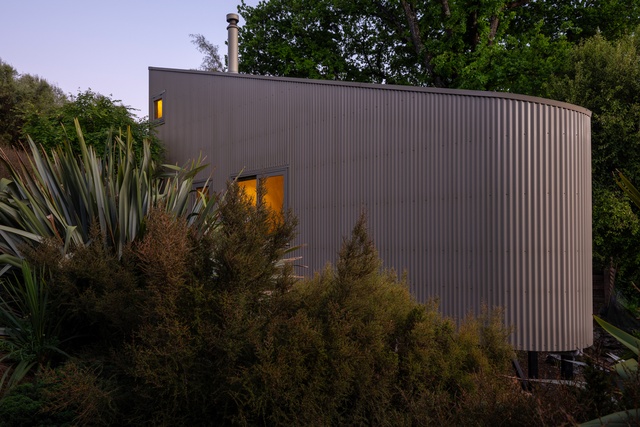
The judges said: “Completing the second stage of a two-part holiday home development, this project cleverly capitalised on a shady, underutilised corner of the site. The compact, triangular 60-square-meter home positions itself as a landscape element within an established native garden. The form follows the sloping topography, gently stepping down while its curved corners soften its presence on site and relationship with the existing dwelling.
Openings are thoughtfully placed to frame views, and skylights bring an abundance of natural light into the space while maintaining privacy. Interior timber brings warmth, a sense of comfort, and resilience, where the exterior curved forms are echoed inside, enriching the experience of the building’s form. A bunkroom loft, accessed by ladder, utilises the generous double-height space, extending the home’s capacity in a charming manner.”
Openfield House by Keshaw McArthur and Matheson Whiteley (UK) in association
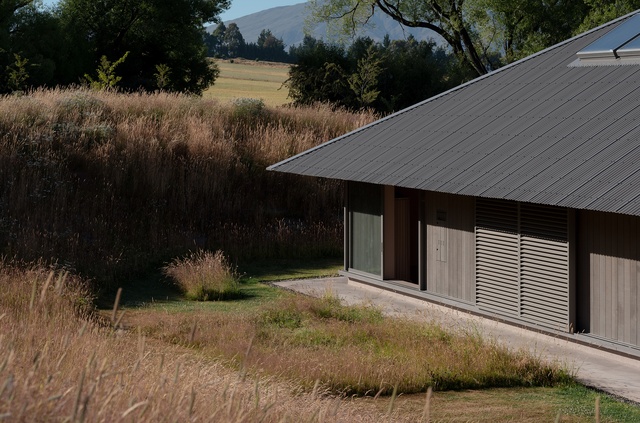
The judges said: “This assured composition of stacked platonic forms holds its ground against the vast scale of the landscape and volatility of the environment.
A corrugated roof recalls the region’s vernacular structures, while sculpted earth mounds both cradle and protect the house, settling it firmly into the foothills.
Inside, geometric rigour is expressed through a nine-square grid. Sliding screens play against robust concrete elements to animate the interior, while the main suite, carved into the roof void, is crowned by an oculus that gathers light and telescopes the view.
Throughout, refinement is evident in the acute attention to materiality, tonal harmony, and texture, all hallmarks of a design of high calibre.”
HOUSING ALTERATIONS AND ADDITIONS
Berhampore Perimeter House by STUDIO MYLA
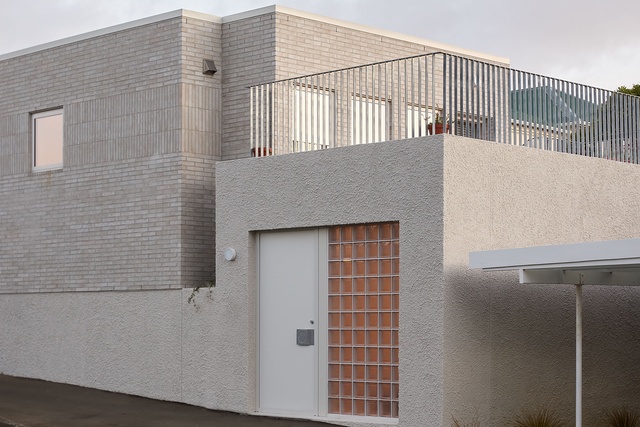
The judges said: “This new addition to one of the “Five Sisters’ Houses” located in Rintoul Street successfully integrates the new with the old while maintaining the identity for each. The new addition engages with the perimeter of the site and provides a rare urban edge to the street in its suburban setting.
The materials of the addition are carefully chosen to respect the concrete structure of the existing house, but equally create a juncture between the two with subtle brick coursework and a refined treatment of the openings. The new spaces are light-filled and delightfully engage with the contours of the site, providing an inventive solution to domestic living with a mix of new and old.”
Wainui Church Conversion by Warren and Mahoney and Objects LTD in association

The judges said: “The conversion of this church into a family holiday home is a respectful yet inventive transformation, championing sustainable adaptive re-use. The restoration and preservation of the existing building has been undertaken with sensitivity and rigor, honouring the integrity of the original church’s construction and maintaining its exterior identity within its original context.
The careful insertion of a modern mezzanine sleeping space, coupled with a kitchen and snug below, is clearly identified through its juxtaposing materiality and colour identity, while a three-tier bunk room and bathroom fit neatly at the rear. A large over-wall sliding door with privacy screen is the only obvious envelope adaptation; a well-handled move that connects the interior to the exterior courtyard and signifies the building’s new use as a reimagined family holiday home.”
Alberon by Jack McKinney Architects

The judges said: “A new entry positioned between the heritage villa and rear addition unlocked the potential of this project. A clear separation of old and new is expressed through material choice and architectural detail. The two-storey addition creates a lofty, open-plan living space with a contemplative quality, seamlessly extending to a terraced garden through elegant giant steel doors. A north-facing deck edges the living area, its louvered screen wall providing privacy from the densely populated slope beyond. Meticulous detailing across both renovation and addition creates a rich dialogue between past and present.”
HOUSING - MULTI UNIT
Catalina Bay Apartments by Architectus

The judges said: “The Catalina Bay Apartments set a benchmark for high-density living in the Hobsonville area with a varied urban form and response to its context. The building cleverly sleeves a row of three-level townhouses to conceal the above grade car parking behind, while two apartment tower blocks sit on top.
The design responds to a viewshaft constraint across the site with the building mass broken into two tower blocks of unequal heights. There is a clarity in the design outcome with a clearly expressed structural grid of the apartment blocks populated with infill walls and balcony zones while the townhouses are clad in brick to distinguish them from the towers behind. The project successfully creates and establishes an urban edge to the developing precinct.”
PLANNING & URBAN DESIGN
Te Ara Pekapeka by Edwards White Architects and BBO in association
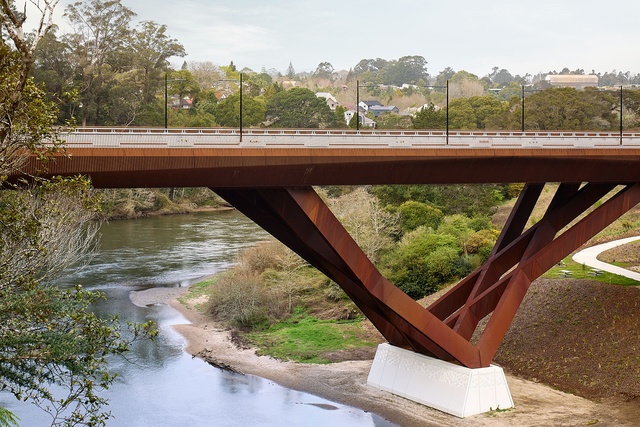
The judges said: “This bridge embodies an elegant and deeply woven collaboration, with all parties moving as one towards a shared vision. Serving as both gateway and threshold, it provides a vital crossing for pedestrians while framing the experience of vehicles passing beneath.
More than infrastructure, it is a beautiful sculptural piece of architecture that brings dynamism and presence to a place that might otherwise have been defined by a purely functional engineering solution. The structure is deliberately held off the water to respect its cultural significance to Māori, minimising environmental impact while honouring the heritage of the site.
Infrastructure is seamlessly integrated, with weathering steel delivering durability. Safety — in both use and upkeep — has been critical to the project’s success. Unlocking a robust transport network and connecting the Peacocke suburb with the city of Hamilton, the bridge stands as both an elegant work of architecture and a catalyst for future development and access.”
George Street, Dunedin Retail Quarter by Jasmax
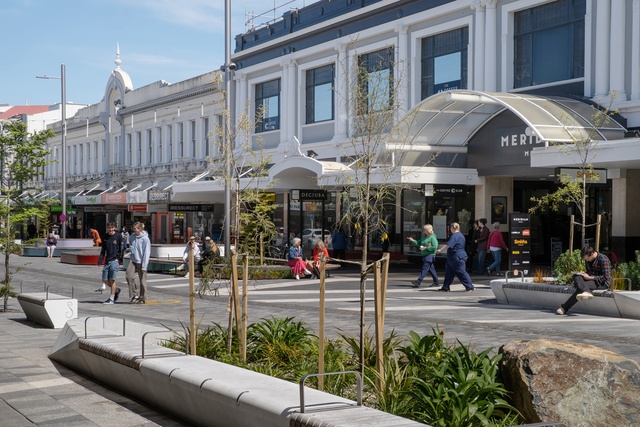
The judges said: “This project successfully creates a shared space spread over four blocks of George Street in central Dunedin. The streetscape successfully blends and prioritises pedestrian movements together with vehicular movements to enhance the user experience for both as well as supporting the retail environment of the central city.
Elements of play are inserted into the framework which, together with planting and seating, provide moments of rest for children and adults alike. The design of the four blocks represents an engagement with local iwi and incorporates artwork into the built environment with paving and artworks. The project is a successful reinvigoration of the urban environment in Dunedin.”
PUBLIC ARCHITECTURE
Punangairi Visitor Centre by Sheppard and Rout
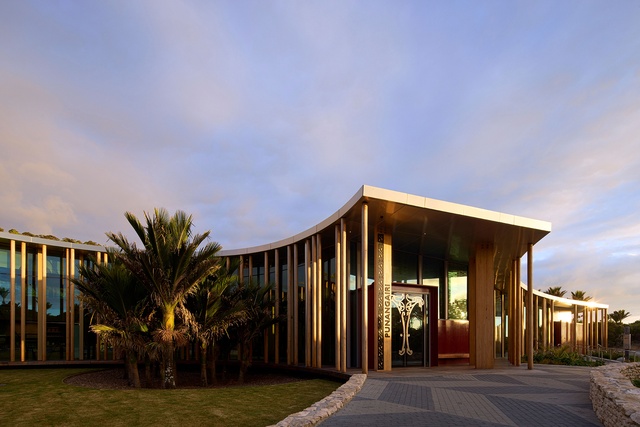
The judges said: “The Punangairi Visitor Centre sits with sensitivity and harmony within its stunning landscape at Punakaiki on the West Coast while also enhancing local identity and visibility.
Elevated on pile foundations, the building is nestled within the site’s undulating contours. Timber posts, used both structurally and decoratively, echo the rhythm of surrounding nīkau palm groves. The scalloped floor plan responds to an existing lawn, presenting a generous foreground while delicately pulling the building back from the busy road. A gently sloping green roof responds to the surrounding tree canopy, while also assisting in the management of heavy rainfall. Inside, lofty light-filled spaces generously connect the building with its surroundings.
This sustainable visitor centre not only supports regenerative tourism but also delivers lasting benefits to the local community and economy.”
Te Āhuru Mōwai by architecture +

The judges said: “An elegantly restrained project in Feilding that reorganises an existing library facility by inserting a new axial arrangement that connects to the wider context of community and civic spaces and provides an internal organisation device to connect new rooms and spaces with existing ones. This axis allows for multiple uses of the spaces both during the day and after hours.
The exterior interface with the street network is updated to provide points of access to the north and south and privacy to the spaces as well as incorporate Māori motifs developed in conjunction with local iwi. A successful project that updates and reinvigorates an existing facility to provide continued use for the community.”
SMALL PROJECT ARCHITECTURE
BB House by Upoko Architects
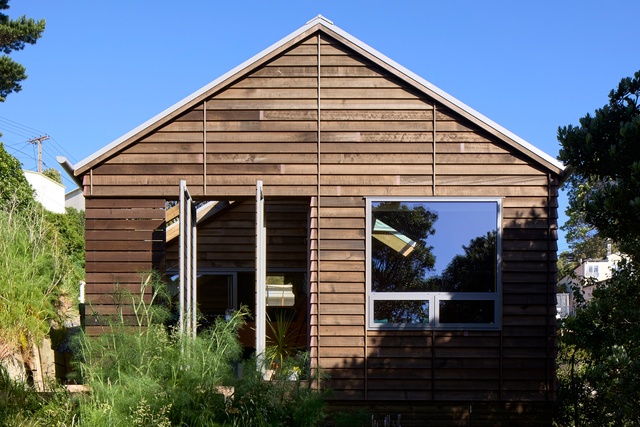
The judges said: “This house demonstrates how thoughtful design can transform a remarkably small footprint into a fully realised home for a single occupant. On just 6x6 metres, a simple gabled form provides a clear and elegant presence, while the layout explores an alternative strategy for suburban living.
Privacy is carefully maintained despite close proximity to neighbours, with window heights strategically set to ensure walkers and bike riders on the adjacent walkway cannot see inside. A cleverly screened courtyard offers seclusion and intimate outdoor connection, while the recessed bath opening to the courtyard balances openness with privacy.
The bedroom challenges conventional expectations of contemporary living. Beautifully detailed and meticulously considered, the project proves that scale need not compromise richness of experience, offering a compact yet generous home that delights at every turn.”
Walker Box by Micah / Architecture
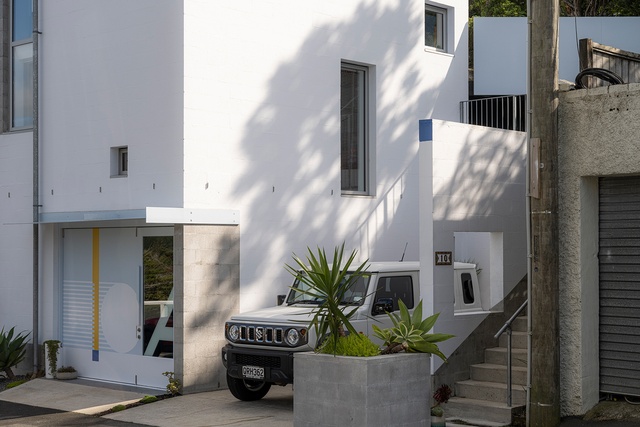
The judges said: “A fresh and inventive approach to urban densification, this tower house by the owner-architect transformed a non-existent site into an opportunity. The architect uses the caveat of providing parking for the primary site to create interesting formal outcomes.
Tackling the constraints of size, budget, and buildability with flair, the building accommodates work, sleep and living across three compact levels threaded together by a filigree spiral stair. Although the form and detailing pay homage to Roger Walker (after whom the project is named), the geometric purity of the tower and the highly resolved fenestration compositions showcase the architect’s own oeuvre.”
Karanga Changing Sheds by Pac Studio

The judges said: “An elegant response to a minimal brief. These changing sheds bring theatrical delight to Auckland’s waterfront while championing sustainable design principles.
Assembled with the care and precision of fine joinery, the sheds are constructed using pre-consumer waste materials and recycled ocean plastic panels.
Designed in partnership with Eke Panuku Development Auckland, the sheds not only provide vibrancy and fun for users, but their requirement to perform within the public realm demanded inherent consideration to long-term resilience and safety.”
COMMERCIAL
Strip Mall by Spacecraft Architects
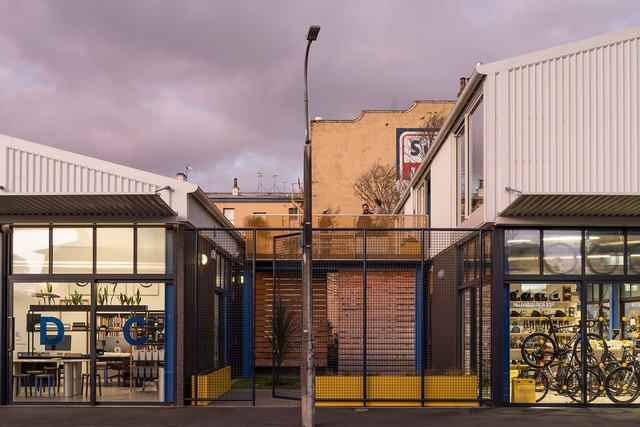
The judges said: “This project brings mixed-use amenities common in larger cities to provincial New Zealand.
Located on a corner site, the ground-floor tenancies feature wrap-around shopfronts and awnings that activate both streets. A planted courtyard enhances the street, serving as a forecourt and backdrop for the first-floor apartment and providing outdoor space for the tenancies.
Robust construction is balanced by innovative use of materials and color. The apartment’s simple layout is designed to allow for future adaptive reuse.
This ambitious mixed-use project serves as a model for future developments, aligning with the owner-occupiers’ intentions for a second-stage development.”
303 Remuera Road by Fearon Hay Architects

The judges said: “Designed as a marker, this building has become a new benchmark for its suburban strip.
Height and bulk are carefully managed through staggered vertical bays of concrete frames infilled with terracotta blades that provide both privacy and shading to the offices within. At street level, a fully glazed frontage wraps an internal corner, transitioning into a double height laneway.
This laneway, an elegant and hard-won solution, doubles as an external lobby that generously accommodates cars and pedestrians.
Robust in the macro and delicate in the micro, the building’s bespoke fixtures and nuanced surfaces are emblematic of the design-led decisions throughout this development.”
BNZ Place by Jasmax

The judges said: “BNZ Place successfully addresses the challenges of designing a commercial office in a seismic zone while also meeting the needs of the client and tenants. At ground level, it makes a positive contribution to the streetscape, particularly in response to Wellington’s winds.
Located on one of the city’s windiest corners, the building enhances the pedestrian experience through a double-height lobby and a precast concrete colonnade — elements appreciated by both occupants and passersby. The building provides a sheltered and yet transparent outdoor rooftop space that is unusual in the context of Wellington.
The form and curtain wall respond to the challenges of viewshafts, wind, and the ‘skinned’ nature of high-rise structures. This is achieved through subtle variety in its curved façade and carefully spaced mullions.”
EDUCATION
Ngā Mokopuna by Tennant Brown Architects
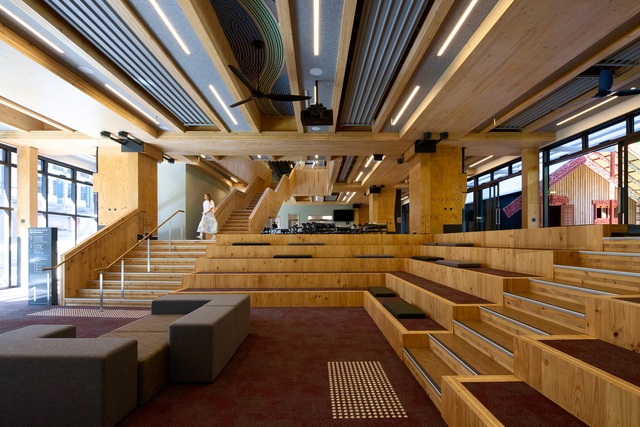
The judges said: “This project exemplifies forward-thinking and environmentally responsible design, achieving a Living Building Challenge outcome that sets a new benchmark for sustainable architecture.
An innovative full timber structure developed in close collaboration with the engineer delivers an elegant and pioneering contribution to advancing timber technology. Warm, light-filled interiors are enriched by integrated planter boxes that recycle water, while stormwater harvesting across both buildings and extensive use of solar power underscore a holistic approach to energy and resource conservation.
A central atrium with an offset stair fosters openness, connection and movement, with its dynamic planning adding spatial richness to the interior experience. Through a synthesis of architectural ingenuity, environmental responsibility and collaborative expertise, this project exemplifies the future of sustainable buildings.”
AUT Tukutuku by Jasmax
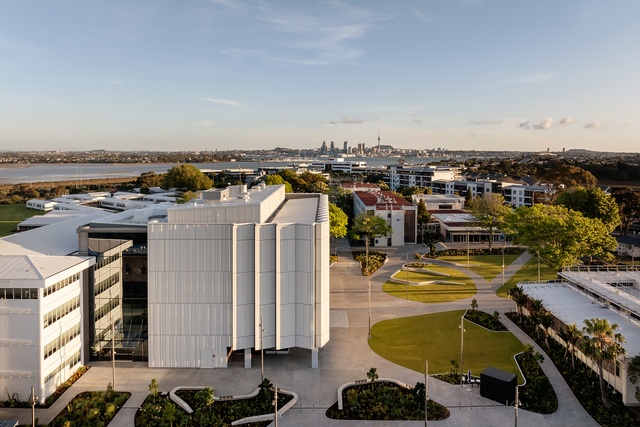
The judges said: “AUT Tukutuku successfully stitches together new and old buildings around a common atrium to create a new gathering place with a series of teaching spaces that create a new heart on the AUT North Campus.
The building makes and allows for connections across the site to the existing library, as well as cross-campus pedestrian connections. The teaching spaces are light-filled but also control sunlight to minimize solar gain and energy consumption.
The exterior of the building has been carefully modulated to control views and outlooks. The existing building has been given a light refresh within the budgetary constraints. Timber technology is deployed for the new build elements to reduce the carbon footprint of the building and act as an exemplar for future development.”
Hiwa - University of Auckland Recreation and Wellness Centre by Warren and Mahoney and MJMA Architecture & Design Toronto

The judges said: “Positioned at the heart of the student precinct, this innovative and technologically advanced Recreation and Wellness Centre is dedicated to enhancing students’ social, physical, and mental wellbeing.
The stacked and split-sectional design is anchored around a central circulation core, where a range of single- and double-height spaces promote a broad range of activities. Flexibility and integrated technologies allow for spaces to change use efficiently.
While the building bridges a complex change in level, its connection with the exterior environment is experienced at many levels; the subterranean pool’s roof structure doubles as a playful faceted landscape knoll, while the open-air playing fields and track on the roof provide expansive outlooks. The external faceted stainless-steel fins reflect the surroundings and daily conditions.
This project is a testament to its long-term collaborative design model.”
ENDURING ARCHITECTURE
Craig House (1998) by Thom Craig
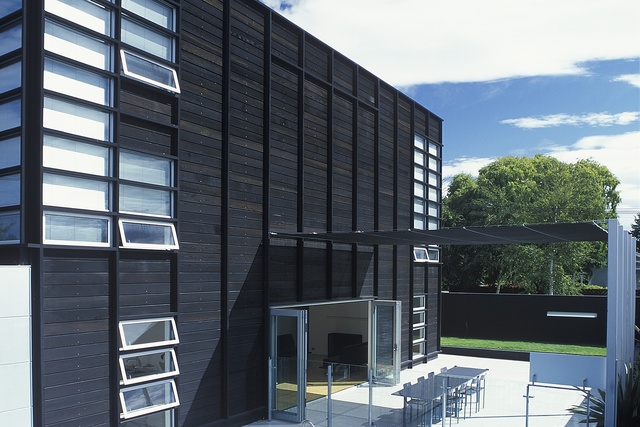
The judges said: “This dwelling offered a direct challenge to suburban living at the time of its conception and remains both relevant and provocative in its questioning of convention today.
At its heart, a dual stair arrangement establishes circular and flexible circulation, enabling multiple uses and adapting with the changing needs of a growing family.
The landscape wall extending to the exterior orchestrates layers of foreground, mid-ground and far view, situating the home within its wider context. A rigorously tested planning logic — still striking 25 years on — demonstrates how constraints of the site, including the building envelope, were navigated to remain fully compliant with the regulations while transforming limitations into opportunity.
A central bathroom core anchors the plan and creates adaptability on either side, reinforcing the project’s enduring capacity for evolution. Through its bold spatial strategies and thoughtful site response, this house stands as a lasting example of architecture that continues to challenge and inspire.”
Tabak House (1984) by Sheppard and Rout
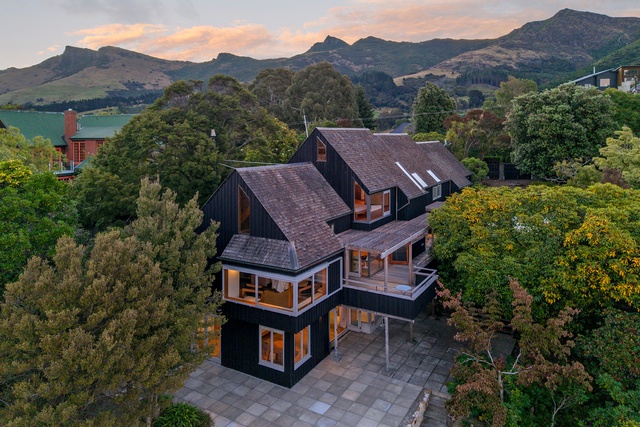
The judges said: “Constructed in 1984, Tabak House not only marked the inauguration of Shephard and Rout as a practice but remains a compelling and relevant timepiece.
Sensitively sited overlooking Governors Bay, the home’s lofty set of gable forms set up a rhythmic geometry, where the home shifts, connects and responds to its landscape and established gardens.
On entrance, the home offers a welcoming journey of compression and expansion, where clearly articulated circulation draws connection through the home to generous double-height living spaces while delightful openings connect upper and lower levels. The integrity of the home’s structure and warm timber materiality have been carefully maintained and updated where required, ensuring its architectural authenticity can be enjoyed by all who experience the home.”
Adam Art Gallery (1999) by Athfield Architects
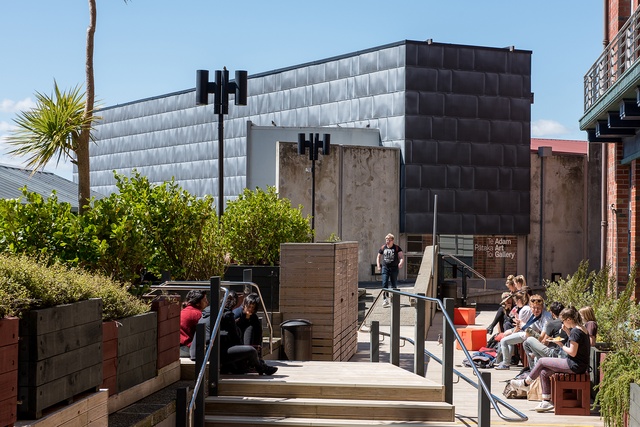
The judges said:“A clever insertion on a challenging, constrained site, the Adam Art Gallery encapsulates an existing landscape stair, maintaining connectivity between buildings while proposing a spatially dynamic modern gallery experience — one that continues to challenge the norms of ‘display’.
The Gallery’s towering rectangular form contains a dynamic and layered interior, where the expansive volume can be experienced as a whole, as well as a vertically layered framework allowing artwork to be engaged with from many vantage points.
Despite having a constrained budget at the time, the zinc-clad design maximises durability, resilience and aesthetic cohesion. The building reflects the architect’s intent, one that speaks to an understated presence while ensuring enduring value and relevance 26 years on.”
HERITAGE ARCHITECTURE
Chapel of the Upper Room - Renovations & Strengthening by Wilkie + Bruce Architects

The judges said: “The restoration of the Chapel of the Upper Room has successfully reinstated the heart of this much-loved and admired college for Canterbury University designed by Warren and Mahoney. The architects have sensitively inserted new structural steel elements to provide much-needed seismic bracing at the roof level, as well as wrapping the structural columns in carbon fibre in a way that appears invisible at first glance.
Other areas of the chapel have been upgraded with care and thought to not diminish the quality of the interior space of the Chapel. The exterior of the building remains unchanged and as it was when originally constructed in the 1960s.”
Te Whare o Rehua Sarjeant Gallery by Warren and Mahoney
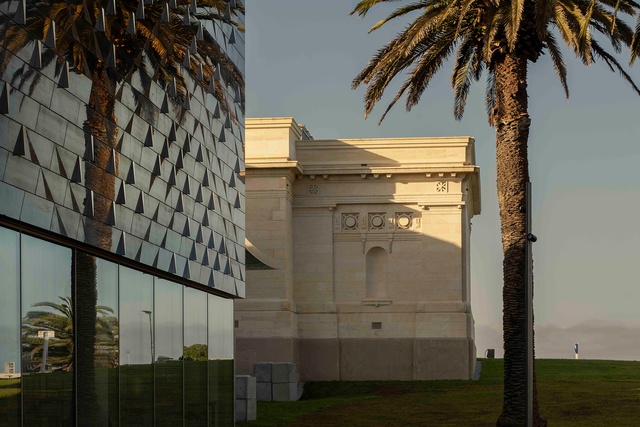
The judges said: “Te Whare o Rehua Sarjeant Gallery by Warren and Mahoney is a quietly powerful restoration of a much-loved cultural landmark. The reinstated galleries bring light and life back into the heart of the building, while carefully integrated seismic upgrades — concrete walls almost invisible within the interior — ensure resilience without disturbing the spatial experience.
New stonework and a revised parapet have been thoughtfully inserted, subtly enriching the existing fabric. A reimagined opening elegantly links the original spaces to the new gallery additions, increasing exhibition capacity while maintaining a sense of intimacy and continuity.
Through its delicate balance of heritage and contemporary intervention the project demonstrates a rigorous attention to detail, materiality, and spatial storytelling, resulting in a gallery that is both enduring and alive.”
Te Ruamātatoru – He Whata Kai by Dalgleish Architects

The judges said: “A beautifully reconstructed pātaka sits at the centre of a community and has become the heart and focus of a wider educational program for mokopuna of the local iwi to engage them in a wider garden-to-table educational program.
The architects have carefully measured an existing pātaka, and working in conjunction with the kaumātua, have updated the construction technology to suit the modern-day built environment. A project which respects the past but looks to the future.”
HOSPITALITY
Te Mānia by Stevens Lawson Architects

The judges said: “Conceived as an ‘anti-house’, this project challenges convention through three buildings dispersed across the site. The pivotal social pavilion is extroverted and sculptural, its pinwheel of apertures frame and connecting with the landscape. Clad in patinaed weathering steel, it encloses a luxuriously detailed interior of dark timber, stone, and angled planes that create dynamic spatial experiences.
In contrast, two semi-buried bedroom sanctuaries are recessive and serpentine, their off-shutter concrete and light-toned interiors forming cocoon-like retreats.
Idiosyncratic and assertive, the project redefines the retreat typology.”
Sugarloaf at Flockhill by Hierarchy Group
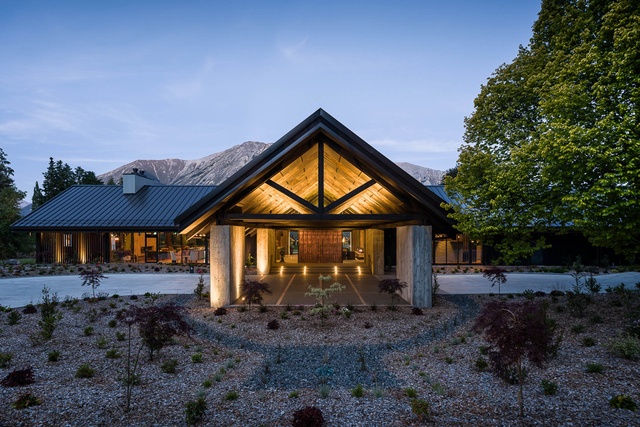
The judges said: “Set within a dramatic alpine landscape, this restaurant adopts a simple gable form with a strong cross axis, carefully oriented to frame views and nestled amongst the surrounding beech forest.
Inside, a rich palette of natural materials evokes the atmosphere of a luxurious alpine lodge on a grand scale, while the exposed structure introduces a rhythmic order and the warmth of natural timber. The arrival sequence is anchored by a spectacular central fireplace, creating a memorable focal point for guests.
Every material choice is deliberate and refined, from robust timbers to intricate detailing, with a distinctive steampunk aesthetic brought to life at the chef’s table in the open kitchen.
Underpinned by a rigorous grid where all proportions trace back to this foundational order, the design achieves a balance of grandeur, intimacy and precision. The result is an alpine dining experience that is both dramatic and immersive, celebrating place, craft and hospitality.”
The New Zealand Architecture Awards receive generous support from Resene, a steadfast sponsor of the program since 1991, and APL, which commenced its sponsorship of the awards in 2021.


